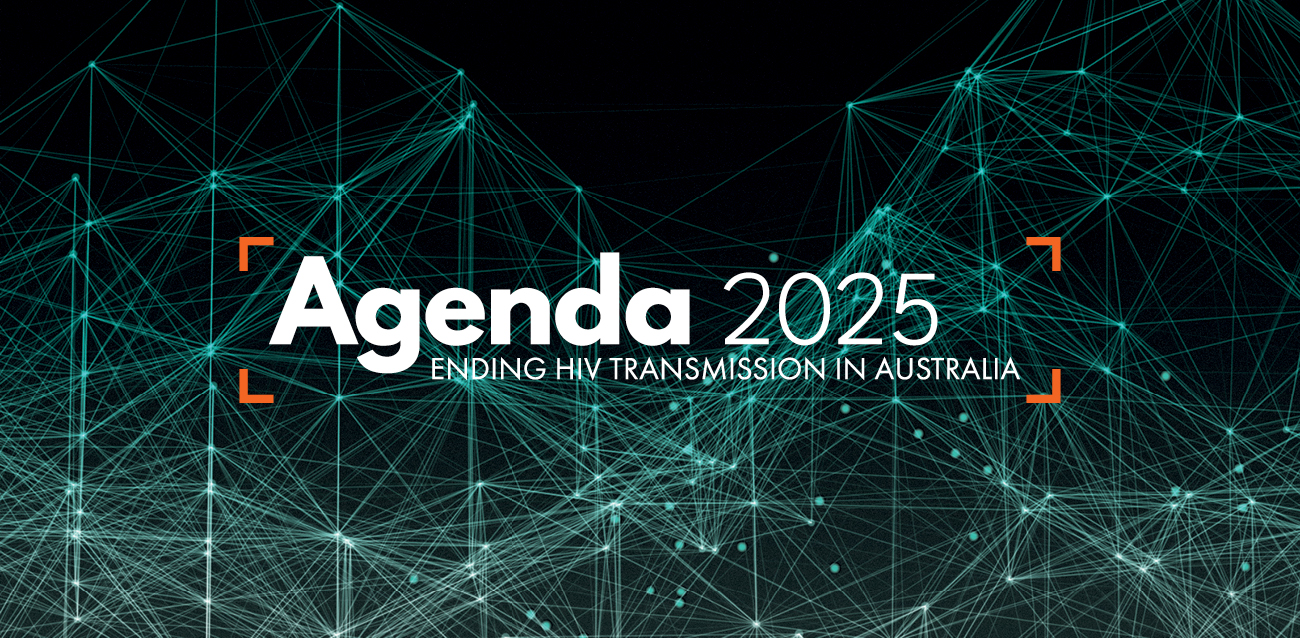Prevention
Key Insights
- To reduce HIV transmission in Australia, any person at risk of HIV must be able to access an effective form of prevention acceptable to them, when they need it. Effective forms of HIV prevention include condoms, PrEP and treatment that results in an undetectable viral load.
- Since 2016, the widespread use of PrEP, mostly by GBM, has transformed Australia’s HIV prevention response.
- Current PrEP use among people at risk of HIV in Australia is among the highest levels globally, but use needs to be increased further if we are to end HIV transmission.
- It is critical subsidised PrEP is available to all Australian residents at risk of HIV, regardless of their residency or visa status.
- Restrictions on PrEP initiation and dispensing should be relaxed to increase access and convenience.
- In the next five years, PrEP should become available in long-acting dosing versions.
- Post-exposure prophylaxis (PEP) is an important intervention for people who may have been exposed to HIV and must be easily accessible to all those who need it, regardless of their residency or visa status.
Renewing Targets
Given the goal is to initiate all people at high HIV risk onto PrEP and maximise the use of all effective HIV prevention methods among people at high risk, an overall prevention coverage goal is important. The proposed target is: “95% of people at risk of HIV infection use one or more forms of effective HIV prevention (condoms, PrEP, U=U) by 2025”. However, even with this broad HIV prevention coverage target, it is important to retain a specific PrEP target to ensure continued focus on new initiations and PrEP persistence among people at high risk of HIV. In monitoring a PrEP target, suitability may be defined in various ways, but it is recommended a relatively simple metric such as condomless anal intercourse with casual partners (in the case of GBM) be utilised. The proposed PrEP target is: “95% of people suitable for PrEP use it by 2025”.PrEP use can refer to daily, on-demand or periodic oral PrEP, or the use of new PrEP modalities as they become available.
Priorities
- Prioritise and invest more in subgroups of GBM in which there is evidence of less HIV prevention success, including immigrants (including Medicare-ineligible people, particularly those who have arrived in Australia in the last four years), those in suburban/regional areas, culturally and linguistically diverse men, Aboriginal and Torres Strait Islander men, men aged less than 25 years, men who travel and engage in high-risk practices overseas, non-gay-identified MSM and GBM who are not strongly connected to gay communities or clinical care. Overall, HIV prevention targets should be met in each of these groups.
- Sustain investment in the groups in which we are doing well (e.g. inner-city gay men and Australian-born GBM), sex workers, people who inject drugs.
- Link new migrants and temporary residents, most of whom will not be eligible for Medicare, to sexual health care. This will enable HIV testing, linkage to care and treatment for those diagnosed and linkage to ongoing prevention services, including PrEP, for those who test negative but are at risk of HIV. These services must accommodate varying levels of HIV and sexual health literacy. They must be culturally safe and readily accessible to people with diverse preferred languages other than English.
- Increase PrEP use by:
- making subsidised PrEP available to all Australian residents at risk of HIV, regardless of visa status
- promoting on-demand PrEP in social marketing and clinics, especially to those who have not previously wanted to use daily oral PrEP
- supporting further exploration of how to demedicalise PrEP, given its proven safety, to increase access, convenience and individual control
- avoiding a long gap between the evidence of efficacy and the licensing, availability and subsidisation of new PrEP products. Workforce development to prepare for these new options will be critical.
- Invest in enhanced surveillance, monitoring and evaluation to ensure effective HIV prevention is reaching all subgroups.


